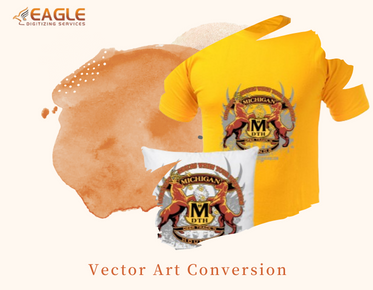Tips for Small Embroidery Fonts to Get the Best Results
Embroidery is a timeless art form that has evolved with technology, allowing for intricate designs and detailed lettering. However, working with small embroidery fonts can be challenging. The precision required to ensure clarity and readability at a reduced size demands a keen understanding of the tools and techniques involved. Whether you're a seasoned embroiderer or a beginner, mastering small fonts can significantly enhance your embroidery projects. In this guide, we'll explore essential tips to achieve the best results with small embroidery fonts. For those looking to delve deeper into the world of embroidery, embroidery digitizing is a crucial aspect to consider.
Understanding the Basics of Small Embroidery Fonts
Before diving into the specifics, it's important to understand what makes small embroidery fonts unique. Unlike larger fonts, small fonts require more attention to detail. The stitches must be precise, and the design must be carefully planned to ensure that the text is legible. The choice of font, thread, and fabric all play a critical role in the final outcome.
Choosing the Right Font
The first step in working with small embroidery fonts is selecting the right font. Not all fonts are suitable for small sizes. Fonts with intricate details or thin lines may not translate well when reduced. Instead, opt for simple, bold fonts that maintain their integrity at smaller sizes. Sans-serif fonts are often a good choice as they tend to be cleaner and more readable.
Adjusting Stitch Density
Stitch density is a crucial factor in embroidery, especially for small fonts. Too many stitches can cause the fabric to pucker, while too few can result in gaps and a lack of definition. Finding the right balance is key. Generally, a higher stitch density is required for small fonts to ensure clarity and prevent the fabric from showing through.
Techniques for Enhancing Small Font Clarity
Several techniques can be employed to enhance the clarity of small embroidery fonts. One effective method is to use a stabilizer. Stabilizers provide support to the fabric, preventing it from stretching or moving during the embroidery process. This is particularly important for small fonts, where even slight movements can affect the outcome.
Using the Right Needle and Thread
The choice of needle and thread can significantly impact the quality of small embroidery fonts. A smaller needle is recommended to create finer details without damaging the fabric. Similarly, using a high-quality, thin thread can help achieve crisp, clean lines. Polyester threads are often preferred for their strength and sheen.
Optimizing Machine Settings
For those using embroidery machines, optimizing the machine settings is essential. Adjust the speed and tension to suit the fabric and thread being used. Slower speeds allow for greater control and precision, which is vital for small fonts. Additionally, ensuring that the machine is well-maintained and the needle is sharp can prevent issues such as skipped stitches or thread breakage.
Common Challenges and How to Overcome Them
Working with small embroidery fonts presents several challenges. One common issue is thread breakage, which can disrupt the flow of the design. To minimize this risk, ensure that the thread is properly tensioned and that the needle is compatible with the thread type. Another challenge is achieving consistent stitch quality. Regularly checking the machine settings and making adjustments as needed can help maintain consistency.
Testing and Sampling
Before committing to a final design, it's advisable to create a test sample. This allows you to assess the font's readability and make any necessary adjustments. Testing different fonts, stitch densities, and thread colors can provide valuable insights and help you achieve the desired result.
Advanced Tips for Professional Results
For those looking to take their small font embroidery to the next level, consider exploring advanced techniques such as digitizing. Embroidery digitizing involves converting designs into a digital format that can be read by embroidery machines. This process allows for greater precision and customization, enabling you to create intricate designs with ease.
Leveraging Software Tools
Embroidery software can be a powerful tool for designing small fonts. These programs offer features such as font resizing, stitch simulation, and color matching, allowing you to experiment with different designs before stitching. By leveraging these tools, you can refine your designs and ensure that they translate well to fabric.
Conclusion: Embracing the Art of Small Embroidery Fonts
Mastering small embroidery fonts requires patience, practice, and a willingness to experiment. By understanding the intricacies of font selection, stitch density, and machine settings, you can achieve professional-quality results. As you continue to refine your skills, consider exploring the possibilities offered by digitizing and software tools. Eagle Digitizing excels in providing professional embroidery digitizing services, ensuring every design is crafted with unmatched precision. Whether you're creating personalized gifts or intricate logos, the art of small embroidery fonts offers endless creative possibilities.


.png)
